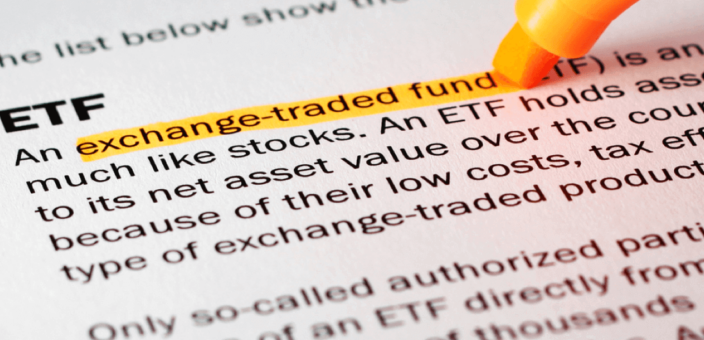ETFs are all the rage in the investment business, recently passing $1 trillion in assets for the first time (see WSJ article), spurred on during the past couple of years as the only equity investment products to log significant inflows. This is a remarkable ramp considering ETFs were first introduced in the mid-90s with the creation of SPDRs, the first of which tracks the S&P 500 and is still the largest ETF. But from this initial index fund - which was designed to give investors a low-cost, liquid vehicle to precisely track a large basket of stocks - ETFs now encompass a sprawling and constantly evolving list of products tracking everything from industry sectors to country performance to gold to long-term US Treasuries.
ETFs are all the rage in the investment business, recently passing $1 trillion in assets for the first time (see WSJ article), spurred on during the past couple of years as the only equity investment products to log significant inflows.
This is a remarkable ramp considering ETFs were first introduced in the mid-90s with the creation of SPDRs, the first of which tracks the S&P 500® and is still the largest ETF. But from this initial index fund – which was designed to give investors a low-cost, liquid vehicle to precisely track a large basket of stocks – ETFs now encompass a sprawling and constantly evolving list of products tracking everything from industry sectors to country performance to gold to long-term US Treasuries.
We believe ETFs have become so successful primarily because of a backlash against the high fees and mediocre performance of actively managed mutual funds. Unlike actively managed mutual funds, ETFs are:
1. Exchange traded, so you can trade them at any point within a trading day;
2. Almost exclusively passive (i.e., they track an index or market);
3. Inexpensive, because they are passive; and
4. Transparent, so you always know what you are buying.
It should be no surprise ETFs now represent a market a quarter the size of actively managed equity mutual funds, “Passive” advocates believe there is no appropriate role for actively managed mutual funds and use the ETF value proposition as their mantra. But let’s keep in mind ETFs are only passive when held for the long term, with the goal of matching the market.
We believe a majority of the new funds flowing into ETFs are actually being used to trade particular markets or instruments. Doing more with ETFs than simply parking money there for the long term requires allocation expertise, which is an active management skill few individual investors possess.
Our advice? If you want to generate active returns (or alpha) through the trading of ETFs, then hire professionals who have the proven skill/ability to allocate well.
One increasingly popular allocation strategy enabled by ETFs is tactical asset allocation. Tactical asset allocation rebalances the percentage of assets held in various categories in order to take advantage of market pricing anomalies or strong market sectors. Prior to the availability of ETFs, tactical asset allocators had to buy individual stocks to gain exposure to various market categories, which was cost prohibitive. Tactical asset allocators typically:
– Overweight asset classes most likely to outperform;
– Underweight asset classes most likely to underperform in the short term; and
– Measure their skill against a benchmark that usually consists of a mix of equity and Treasury indexes (for example, 60% S&P 500/40% Treasury).
This is in contrast to strategic asset allocation, which is a truly passive strategy. Strategic asset allocators create a long term asset allocation and rebalance if their asset classes fall out of line with their long term targets. While it is possible for an individual investor to execute a strategic asset allocation plan, it usually requires more time and attention than most individual investors are willing to spend.
If you truly want to take advantage of the power of ETFs, you should consider money managers who know how to capture the most value from them and have the track records to prove it.
Disclosure
Nothing in this communication should be construed as an offer, recommendation, or solicitation to buy or sell any security. Wealthfront’s financial advisory and planning services, provided to investors who become clients pursuant to a written agreement, are designed to aid our clients in preparing for their financial futures and allow them to personalize their assumptions for their portfolios. Additionally, Wealthfront and its affiliates do not provide tax advice and investors are encouraged to consult with their personal tax advisors.
All investing involves risk, including the possible loss of money you invest, and past performance does not guarantee future performance. Wealthfront and its affiliates rely on information from various sources believed to be reliable, including clients and third parties, but cannot guarantee the accuracy and completeness of that information. For more information please visit www.wealthfront.com or see our Full Disclosure.
The S&P 500® (“Index”) is an index of 500 stocks seen as a leading indicator of U.S. equities and a reflection of the performance of the large cap universe, made up of companies selected by economists. The S&P 500 is a market value weighted index and one of the common benchmarks for the U.S. stock market.
The S&P 500 (“Index”) is a product of S&P Dow Jones Indices LLC and/or its affiliates and has been licensed for use by Wealthfront. Copyright © 2015 by S&P Dow Jones Indices LLC, a subsidiary of the McGraw-Hill Companies, Inc., and/or its affiliates. All rights reserved. Redistribution, reproduction and/or photocopying in whole or in part are prohibited Index Data Services Attachment without written permission of S&P Dow Jones Indices LLC. For more information on any of S&P Dow Jones Indices LLC’s indices please visit www.spdji.com. S&P® is a registered trademark of Standard & Poor’s Financial Services LLC and Dow Jones® is a registered trademark of Dow Jones Trademark Holdings LLC. Neither S&P Dow Jones Indices LLC, Dow Jones Trademark Holdings LLC, their affiliates nor their third party licensors make any representation or warranty, express or implied, as to the ability of any index to accurately represent the asset class or market sector that it purports to represent and neither S&P Dow Jones Indices LLC, Dow Jones Trademark Holdings LLC, their affiliates nor their third party licensors shall have any liability for any errors, omissions, or interruptions of any index or the data included therein.
About the author(s)
Andy Rachleff is Wealthfront's co-founder and Executive Chairman. He serves as a member of the board of trustees and chairman of the endowment investment committee for University of Pennsylvania and as a member of the faculty at Stanford Graduate School of Business, where he teaches courses on technology entrepreneurship. Prior to Wealthfront, Andy co-founded and was general partner of Benchmark Capital, where he was responsible for investing in a number of successful companies including Equinix, Juniper Networks, and Opsware. He also spent ten years as a general partner with Merrill, Pickard, Anderson & Eyre (MPAE). Andy earned his BS from University of Pennsylvania and his MBA from Stanford Graduate School of Business. View all posts by Andy Rachleff



